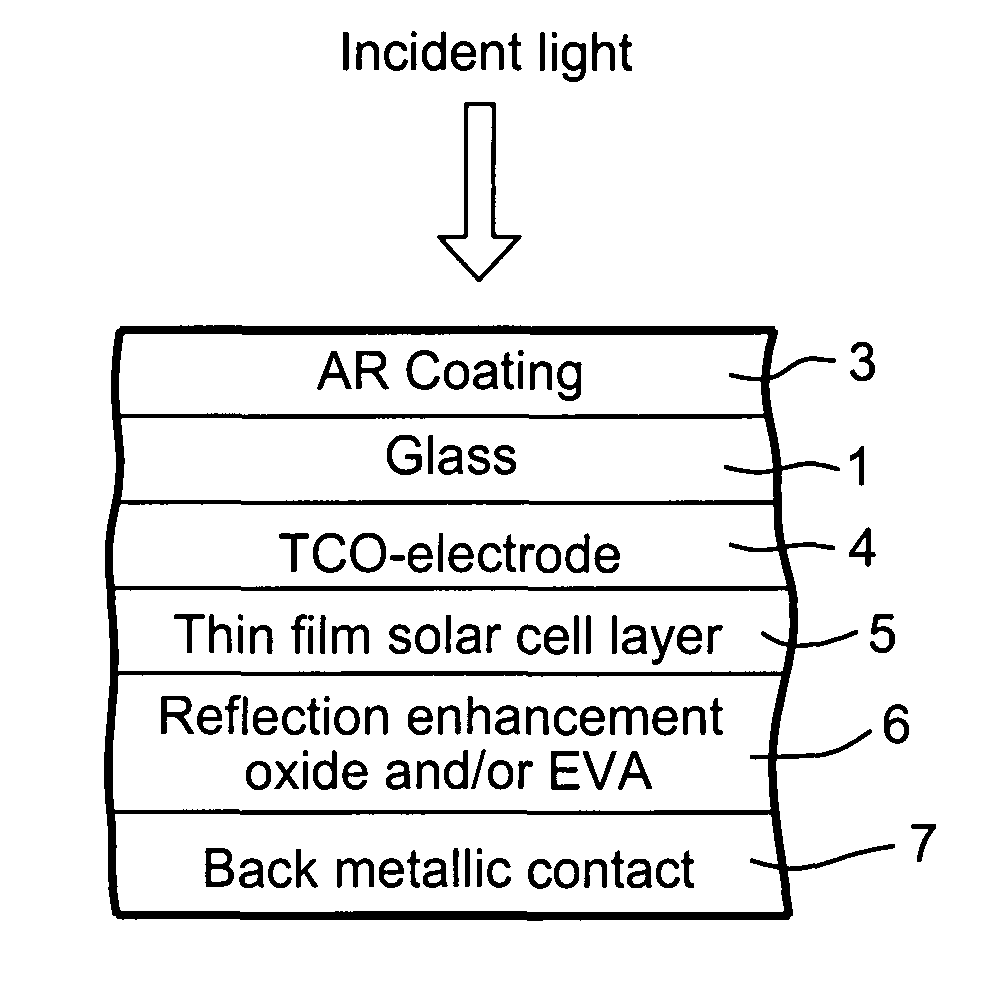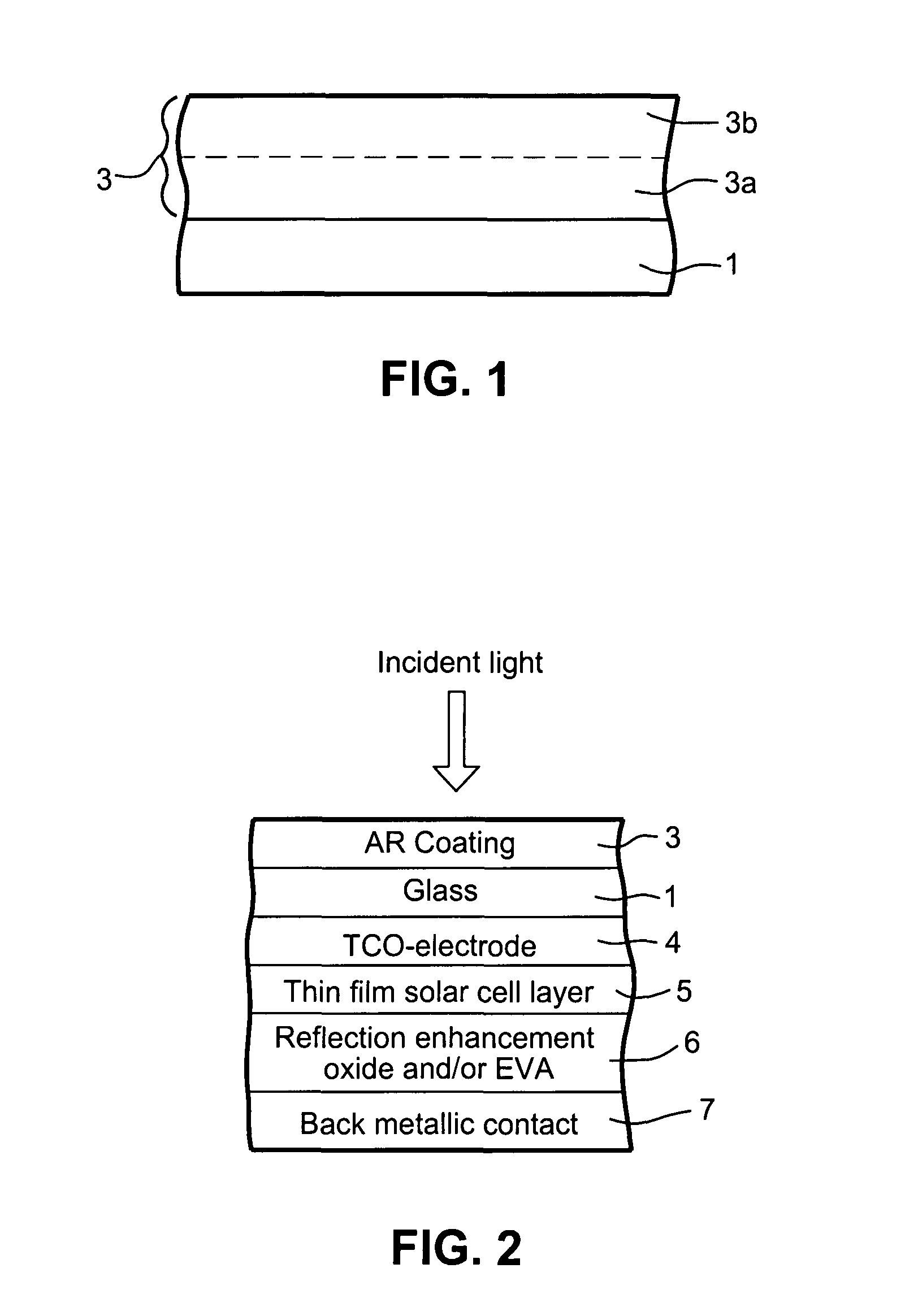Method of making a photovoltaic device or front substrate for use in same with scratch-resistant coating and resulting product
a photovoltaic device and front substrate technology, applied in the direction of coatings, semiconductor devices, special surfaces, etc., can solve the problems of low scratch resistance, ineffective scratch resistance of porous silica coatings in certain instances, and less efficient solar cells, so as to improve the efficiency and/or power of the photovoltaic device, the effect of high transmittan
- Summary
- Abstract
- Description
- Claims
- Application Information
AI Technical Summary
Benefits of technology
Problems solved by technology
Method used
Image
Examples
example # 1
EXAMPLE #1
[0044]The silica sol was prepared as follows. A polymeric component of silica was prepared by using 64% wt n-propanol, 24% wt Glycycloxylpropyltrimethoxysilane (Glymo), 7% wt water, and 5% wt hydrochloric acid. These ingredients were mixed for 24 hrs. The coating solution was prepared by using 21% wt polymeric solution, 7% wt colloidal silica in methyl ethyl ketone supplied by Nissan Chemicals Inc, and 72% wt n-propanol. This was stirred for 2 hrs to give silica sol. The final solution is referred to as silica sol. (In the subsequent examples, the siloxanes are mixed and / or agitated with the silica sol at or before this point—i.e., after the sol is created but before application.) The silica coating was fabricated using the spin-coating method with 1000 rpm for 18 secs. The coating was heat-treated in a furnace at 625° C. for three and a half minutes. The critical scratch load of this coating is 20 mN as shown in table 1.
[0045]While glycycloxypropyltrimethoxysilane is an e...
example # 2
EXAMPLE #2
[0046]Example #2 was the same as example #1, except the carboxysiloxane (3,5 bis(3-carboxy propyl)tetramethyl disiloxane) and silica sol were taken in 2:98 percent weight ratio respectively. The critical scratch load of this coating was 20 mN as shown in table 1.
example # 3
EXAMPLE #3
[0047]Example #3 was the same as example #1, except the carboxysiloxane (3,5 bis(3-carboxy propyl)tetramethyl disiloxane) and silica sol were taken in 5:95 percent weight ratio respectively. The critical scratch load of this coating was 20 mN as shown in table 1.
PUM
| Property | Measurement | Unit |
|---|---|---|
| temperature | aaaaa | aaaaa |
| temperature | aaaaa | aaaaa |
| temperature | aaaaa | aaaaa |
Abstract
Description
Claims
Application Information
 Login to View More
Login to View More - R&D
- Intellectual Property
- Life Sciences
- Materials
- Tech Scout
- Unparalleled Data Quality
- Higher Quality Content
- 60% Fewer Hallucinations
Browse by: Latest US Patents, China's latest patents, Technical Efficacy Thesaurus, Application Domain, Technology Topic, Popular Technical Reports.
© 2025 PatSnap. All rights reserved.Legal|Privacy policy|Modern Slavery Act Transparency Statement|Sitemap|About US| Contact US: help@patsnap.com


